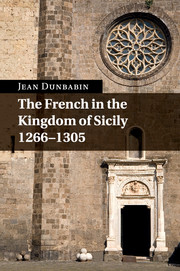Book contents
- Frontmatter
- Contents
- Acknowledgements
- List of abbreviations
- Genealogical tables
- Introduction
- Part I Means of communication
- Part II Indirect channels of communication
- Part III Settlers in the Regno
- Part IV Cultural and political impacts
- 10 Royal ideology: the saintly family
- 11 Religious politics and practices
- 12 The universities of Naples and Paris
- 13 Medicine and science
- 14 Law
- 15 Administrative practices
- 16 Navy and army
- 17 Literature
- Epilogue: spurs to remembering
- Conclusion
- Bibliography
- Index
15 - Administrative practices
Published online by Cambridge University Press: 03 May 2011
- Frontmatter
- Contents
- Acknowledgements
- List of abbreviations
- Genealogical tables
- Introduction
- Part I Means of communication
- Part II Indirect channels of communication
- Part III Settlers in the Regno
- Part IV Cultural and political impacts
- 10 Royal ideology: the saintly family
- 11 Religious politics and practices
- 12 The universities of Naples and Paris
- 13 Medicine and science
- 14 Law
- 15 Administrative practices
- 16 Navy and army
- 17 Literature
- Epilogue: spurs to remembering
- Conclusion
- Bibliography
- Index
Summary
That the French kingdom might be indebted to the Regno in administrative practices should arouse no surprise. Whether by deliberate innovation to make central government more efficient or by a pragmatic response to circumstances that pushed him in the same direction, the emperor Frederick II had created a body of civil servants in the localities of his realm and channels of communication between them and his court that appear to have been reasonably efficient in carrying out his orders. Charles of Anjou maintained or restored Frederick's work. Most historians have regarded the governmental inheritance of the Angevin kings in the Regno as far in advance of (in the sense of being more bureaucratic than) what prevailed in France in 1266. Given the exposure, on occasion prolonged, of many French administrators to the courts of Charles I and Charles II, some copying is therefore almost to be expected. In a context like this, the historian is bound to wonder, for example, whether the increasingly dirigiste line taken by Philippe III towards foreign merchants in France was a reflection of what he had seen in Charles of Anjou's realm. But wondering is far from knowing. And the differences between the two kingdoms make long-lasting effects of exact copying hard to achieve.
- Type
- Chapter
- Information
- The French in the Kingdom of Sicily, 1266–1305 , pp. 250 - 259Publisher: Cambridge University PressPrint publication year: 2011

